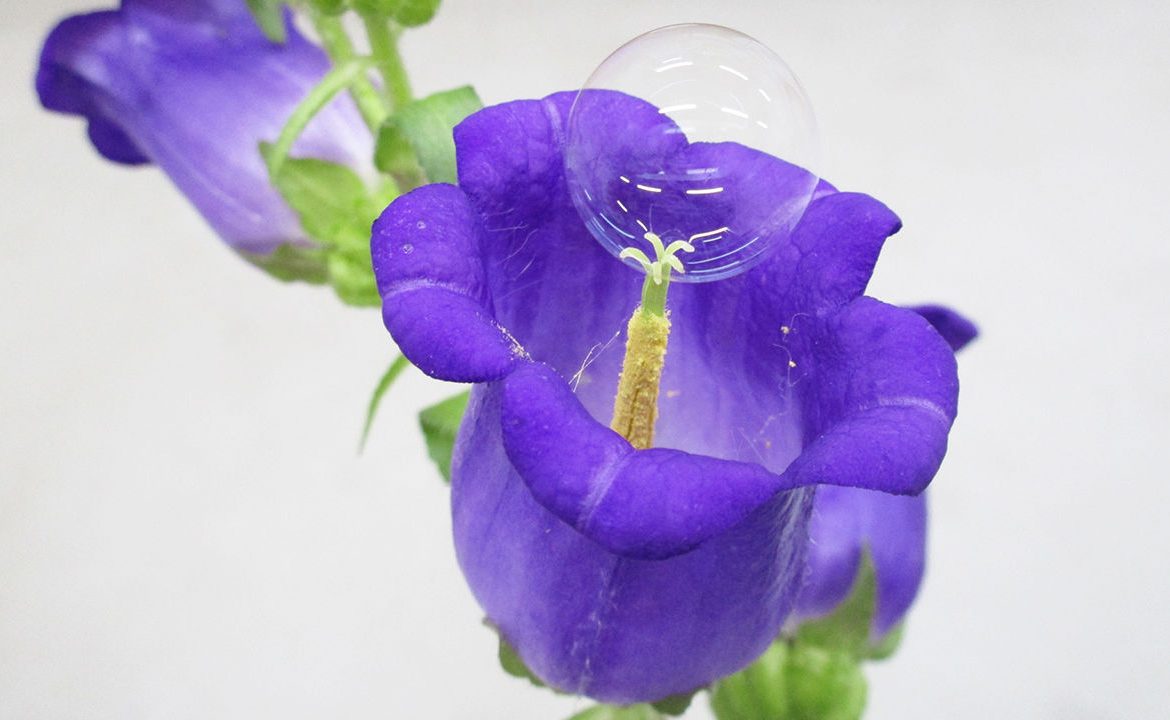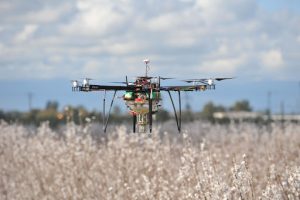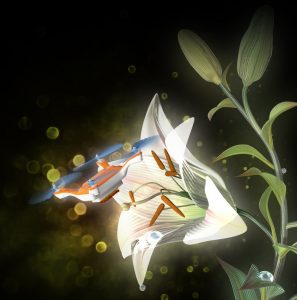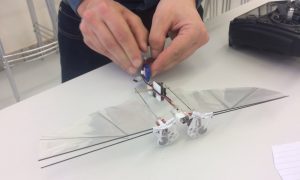
Ten Hundred Thousand Million Pollens
The importance of bees must be committed to everyone’s memory, with the famous quote from Albert Einstein: “If the bee disappeared off the face of the earth, man would only have four years left to live.” Even if we are not certain whether Einstein actually pronounced this sentence, the grain of truth in this idea continues to grow. Scientific community carries out studies on how to deal with a world deprived of bees, at a fast pace, especially in the face of facts such as the colony collapse syndrome affecting honey bees, destruction of wildlife habitats for agricultural and industrial purposes, decreasing insect populations, climate change, and the global warming.
Insects, and especially bees, play an important role in pollination – which is the main form of reproduction for most plants. Some plants such as corn rely on the wind for pollination, while some plants such as potatoes can be reproduced from their tubers. However, natural pollinator insects are essential for many trees. In some parts of China, agricultural workers climb trees with buckets filled with pollen in their hands, to rub pollen on all of the flowers individually and pollinate them by hand. This is quite a laborious, tiring, slow and long task. In the enormous almond gardens of America, pollination is achieved by bringing millions of bees to the region every year. Growing a single product in vast areas, that is, monoculture production sites, can never produce enough nutrients that can sustain such a large number of insects to pollinate all the plants all year long under normal conditions. This is why the bees also need to be transported to areas in need of pollination, by monitoring pollination seasons.
In addition, it is a well-known fact that poisons used in the agricultural industry, namely insecticides, herbicides, larvacides and the like, adversely affect these very important insect populations that we rely on for natural pollination. In fact, a group of synthetic agricultural poisons called neonicotinoids are believed to be one of the actors playing a leading role in honeybee’s colony collapse syndrome. The misery of bumblebees, another important pollinator, comes from thiamethoxam, which prevents the queen from ovulating. New studies reveal the effects of these industrial poisons on human health, causing a number of problems including cancer, immune system problems, reproductive system problems, birth defects, and even behavioural disorders such as attention deficit disorder. Several national and international NOGs keep on struggling to further reveal the hazards of these products and the means of prohibiting their usage. Just a few weeks ago, the decision by the Ministry of Agriculture and Forestry to ban 16 pesticide agents was welcomed in the scientific community.

The world of science comes up with a variety of novel ideas to prevent humanity from starving in case the rapid disappearance of pollinator insect populations continues. In particular, drone technology, which has become a frequent sight, is being used in various trials for this purpose.
One of the trials is carried out by a Dropcopter, a drone that flies over a certain area, collectively pollinating open flowers at the time. But first of all, it is necessary to collect pollen from open flowers on several trees. This is usually done by hand or by shaking the trees, causing the flowers to fall. This pollen is later purified and loaded into a manoeuvrable drone, which will fly above the trees in a designated route to releasing pollens onto their flowers in a controlled manner. To provide better pollination, pollens are loaded with positive electricity with a special electrostatic device as they are released, thus enabling better adhesion to newly opened moist buds. Thanks to this technology, it is possible to perfectly control the pollination time and to determine which flowers will be pollinated, an advantage in the product market.
Eijiro Miyako from Japan Advanced Industrial Science and Technology Institute and her teammates are working on mini drone vehicles called “artificial insects” that will have the ability to fertilize each flower individually. Horse hair dipped in an ionic liquid gel is attached to the bottom of these mini devices to facilitate carrying pollen from one plant to another. Although trials in the laboratory and outside proved that the technique brings success in pollination, it is still too early to use these “artificial bees” in a real-life setting. First, the manually controlled vehicle needs to visit each and every plant, when factors such as wind may make things difficult. Also, blades of the drone may damage flowers. There is hope that manoeuvrability and thus the success rate can be improved in the future, thanks to technologies including artificial intelligence and GPS.

United Nations had announced May 20th as the “World Bee Day” on October 20, 2017. About a month after this day’s anniversary, Miyako and her team proposed another interesting method: soap bubbles. Anticipating that soap bubbles blown into the air by every kid can be used to carry pollen to flowers, Miyako rolled up his sleeves thinking this could be a much cost-effective and harmless method. First, they identified a soap mixture that would have minimal effect on flowers, added pollens to this mixture, and loaded the whole thing on drones that would release it onto flowers to be fertilized. This way, they ensured that the bubbles contacted 90% of the targeted flowers. The bubbles, which burst upon contact with the flowers, adhered to the female reproductive organs and pollinated them. In small-scaled trials, the success rate was close to manual pollination.
The biggest advantage of this method is that it greatly reduces the amount of pollen needed for artificial pollination. Pollinating flower by hand or brush requires as much as 1,800 milligrams of pollen per flower, while only 0.06 milligrams of pollen per flower was sufficient with this method. One of the objectives of the research is to find ways to reduce the amount of pollen to be used in order to reduce the cost of artificial pollination.
Scientists working at the Delft University of Technology in the Netherlands have a slightly different take on the concept of artificial insects. By studying the anatomy of the fruit flies, they managed to produce a prototype of robot insects that can flap its wings 17 times per second, hang in the air, fly in any direction, and even roll in the air. Although the wings made of very light mylar material are quite sensitive, they allow the vehicle to speed up to 24 km per hour and help the batteries last longer due to better aerodynamics compared to propeller vehicles. Researchers state that placing sensors on these robots might allow them to travel from flower to flower by themselves. However, these robots with a wingspan of 33 cm and a weight of 29 grams, are a bit too big for this job for now. But the ultimate goal of the studies is to produce smaller, lighter robots in the same form.

It should be noted that none of these technologies aims to replace bees and other natural pollinators. Rather, they aim to remain as supporting alternative techs for pollination, for as long as the insect population continues to decline. Unless precautions are taken to increase insect populations, especially in agricultural areas, we may one day need such technologies to continue food production. Let us hope that we do not get to face those days, by taking good care of the well-being of both humanity and nature.
REFERENCES
- 1. https://futurism.com/the-byte/new-technique-save-agriculture-bees-die
- 2. https://www.sciencedaily.com/releases/2020/06/200617150033.htm
- 3. https://www.sciencemag.org/news/2020/06/drone-delivered-soap-bubbles-could-help-pollinate-flowers
- 4. https://www.forbes.com/sites/paulrodgers/2014/09/09/einstein-and-the-bees-should-you-worry/#552dbce78157
- 5. https://www.sciencemag.org/news/2017/02/could-pollinating-drone-replace-butterflies-and-bees
- 6. https://www.theguardian.com/environment/2018/oct/09/robotic-bees-could-pollinate-plants-in-case-of-insect-apocalypse
